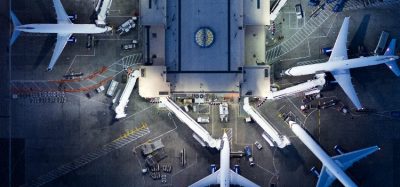EUROCONTROL’s Challenges of Growth 2008 Report
- Like
- Digg
- Del
- Tumblr
- VKontakte
- Buffer
- Love This
- Odnoklassniki
- Meneame
- Blogger
- Amazon
- Yahoo Mail
- Gmail
- AOL
- Newsvine
- HackerNews
- Evernote
- MySpace
- Mail.ru
- Viadeo
- Line
- Comments
- Yummly
- SMS
- Viber
- Telegram
- Subscribe
- Skype
- Facebook Messenger
- Kakao
- LiveJournal
- Yammer
- Edgar
- Fintel
- Mix
- Instapaper
- Copy Link
Posted: 3 December 2008 | David McMillan, Director General EUROCONTROL | No comments yet
EUROCONTROL publishes a series of studies aimed at providing decision makers with up-to-date assessments of the challenges presented by the increasing demand for air transport. The latest, ‘Challenges of Growth 2008’1, is the third in the series and looks at those long-term challenges needing long-term solutions.
EUROCONTROL publishes a series of studies aimed at providing decision makers with up-to-date assessments of the challenges presented by the increasing demand for air transport. The latest, ‘Challenges of Growth 2008’1, is the third in the series and looks at those long-term challenges needing long-term solutions.
A time of upheaval
2008 has been a difficult year for air transport:
- The Euro area’s economy stopped growing
- Fuel prices doubled – then dropped again
- Business aviation and low-cost carriers drove traffic growth: this growth stopped for business aviation and halved for LCCs
- A number of long-haul, low-cost operators have stopped flying
- Several major flag carriers are being sold or restructured
- Liquidity has dried up, due to the banking crisis, adding to cash-flow or restructuring difficulties
- Passenger numbers, cargo volumes and load factors are falling
- Debate on environmental legislation is intensifying.
It has been daunting – but the air transport industry has never had it very easy. The industry has gone through turbulent times in the past: 1974 and 1981 were marked by oil crises; 1991 saw the war in Iraq and sharp dips in air traffic; 2001 had the 9/11 attacks. The industry survived and grew stronger each time; we are confident that it will overcome this bad period.
However, it needs to emerge from this particular storm heading in the right direction, because the number of flights in 2030 is expected to be 18.2 million per year. That is nearly double those of 2007 (9.9 million flights).
The challenges that confront the air transport industry, both now and in the future, need decisions and actions. Good decisions have to be based on reliable data from trustworthy sources.
The ‘Challenges of Growth 2008’ study is based on EUROCONTROL’s latest forecasts, which are helpful in giving structure to uncertainty, allowing a course to be determined in unstable times. Forewarned is forearmed!
Major challenges expected in the future
Five major challenges facing air transport in the longer-term have been identified:
- Airport capacity: In the study’s ‘most likely’ scenario, the number of unaccommodated flights grows rapidly from 0.9 million in 2025 to 2.3 million flights by 2030, meaning that 11% of potential flights will not be accommodated, going by airports’ current plans.
- Environmental impact: difficult trade-offs will be required – and these not just between growth and the environment but also between CO2 emissions, noise and local air quality.
- Operating a congested network in which parts function at near capacity: it will be very vulnerable to perturbations and the network will be less able to recover quickly from them.
- Institutional and social changes are needed so that SESAR (the Single European Sky’s technical programme for the future air traffic management system) can deliver on enhanced air traffic capacity – on time.
- Climate change will affect demand for travel and possibly cause perturbations to airports and flights (see the section on ‘climate change’ below).
Mitigation
By 2030, there will be a demand for 2.3 million more flights a year than the airports can deal with. That is 6,300 unaccommodated flights per day!
Also by 2030, 19 airports will be operating at full capacity for eight hours or more a day and about half of every day’s flights will pass through one of these airports.
As more and more segments of the network reach capacity, and as delay-causing events proliferate, the network as a whole will be affected: it will become vulnerable to regular delay unless strong action is taken to manage it.
Five mitigation methods have been examined; they could help reduce the impact of the five major challenges.
- Schedule smoothing: this involves moving flights to times of day when more capacity is available. The limit with this method is that there are only a few quiet times that can absorb shifted flights.
- High Speed Train investment: out of 170,000 city pairs, High Speed Trains (HSTs) only directly affect around one hundred of them. If the HST network were extended from 100, as is currently planned, to over 300 city pairs, then 0.3 – 0.5 million flights per year could be replaced. Given the cost of building HST lines (€18 million per kilometre), this solution is unlikely to be justifiable as a sole means of reducing demand.
- Even larger aircraft could be used when there are, say, more than 15 one-way flights. This could reduce unaccommodated daily demand by over a third at congested airports. However, there are few of the right kind of airport pairs and so it is of limited value for the network as a whole.
- Alternative airports: they can reduce unaccommodated demand by 25-40% but the effect is limited by capacity constraints elsewhere in the system and the willingness of passengers and carriers to relocate. Another problem is that there will be adverse environmental effects if ground transport is needed for passengers to access more remote airports.
- Investment: SESAR, the technical complement to the European Commission’s Single European Sky package of regulations aimed at eliminating borders in the sky, will see the development and implementation of radically new equipment, approaches, and procedures. If the necessary investment is made, bringing airports to ‘best-in-class’ performance levels, it will be possible to reduce unaccommodated demand by up to 40%, but these capacity gains require investment that is not yet reflected in European airports’ plans.
The largest reductions would come from a mix of these five mitigation methods.
The environmental challenge
The environmental issue is one that has taken on considerably more importance than was the case when the last study ‘Challenges to Growth 2004’ was issued. At that time, capacity was perceived as being the most pressing concern; it is rapidly being eclipsed by people’s worries about climate change and aviation’s contribution to it.
Environmental challenges for aviation are both global – CO2 (carbon dioxide) emissions – and local – noise and local air quality.
Aviation’s impacts on the environment are increasingly in the spotlight. Legislative attention is on CO2 emissions but there are other effects that contribute to climate change, including NOx (nitrogen oxide) and contrail formation.
The air transport industry is recognising and acting on the environmental challenges, but air traffic management is expected to provide at best a 10% reduction in CO2 emissions per flight.
Air traffic management can influence environmental performance by imposing or relaxing constraints on the lateral routes, vertical profiles and cruise speeds of aircraft in flight.
Air traffic management has limited direct influence over constraints imposed by airport infrastructure, but it can help influence what infrastructure is provided – for airspace and airside design – and on some aircraft related environmental mitigation (overflights, for instance).
However, even the most far-reaching technological improvements will probably not be enough to mitigate aviation’s impact on the environment: our numbers of flights will grow and so, obviously, will emissions.
Environmental capacity
Expanding environmental capacity is problematic, as challenges can conflict: local noise mitigation with fuel efficiency is one. Air traffic management can play a role in managing the resulting trade-offs.
Especially at airports, aviation’s environmental impacts have the potential to constrain operational capacity or growth when:
- Noise or emissions exceed regulatory limits, planning agreements or tolerance in the surrounding community
- Energy and water supplies are scarce – at London Heathrow, for instance, water availability has been flagged as a possible long-term constraint
- Infrastructure growth is constrained by sensitive habitats or existing buildings
- Local air quality is degraded – although this might be more influenced by ground transport than by aircraft.
These factors determine ‘environmental capacity’ and could constrain the system overall.
Changes in technology are unlikely to be able to release sufficient capacity at a local level, but air traffic management improvements can help as they have an effect on all the aircraft within the system.
There are trade-offs between conflicting environmental impacts.
For example, noise mitigation procedures route aircraft away from noise-sensitive areas but they require longer track-length, so aircraft use more fuel and emit more greenhouse gases. The use of more fuel-efficient operational procedures, such as continuous descent approaches and expedited climb departures, may increase. ATM can help in managing these.
Research into trade-offs between fuel efficiency and other climate-related factors, contrails and the formation of cirrus clouds for instance, suggest that cruising levels and speeds could be altered for environmental reasons.
The contrail-formed cirrus clouds issue is a difficult one: we estimate that we are about ten years away from a definitive scientific answer. Once the real impact has been determined, and if it is decided to divert aircraft away from airspace that has a propensity for developing cirrus clouds, then ATM could help develop suitable procedures for doing so.
Climate change: its potential impact on aviation
The climate is changing – and this has definite implications for air transport.
The sea level rise is projected to continue, with rises of between 0.2 and 0.6m from 1980 to 2090 expected – and these do not include uncertainties such as the melting of the ice sheets in Greenland (another 0.2m) or the West Antarctic (up to 6m).
Airports located on coastlines or tidal river floodplains could be affected by rising sea levels.
Higher temperatures will become the norm. In northern and eastern Europe, most of this warming will occur in the winter; in the Mediterranean, central and western Europe, the greatest increases will be in the summer: the Iberian peninsula and south-west France may have temperature rises of more than 6°C.
Holiday patterns might well change as a consequence. Airlines will be able to adapt relatively easily to a change of holiday destinations but airports could well be affected.
Bouts of extreme weather will occur more frequently and will probably be more severe, bringing disruption to flights and airports.
The scale of climate change is uncertain, but the fact that the climate will change is now well accepted: work in this area is going to have to accelerate.
Conclusion
Testing times lie ahead for the air transport industry – but the industry has survived difficult periods before and will doubtless do so again. By planning properly for the future, much trouble may be averted.
The airport community engaged positively with the issues raised in the ‘Challenges to Growth’ study four years ago. Most gratifying is the fact that, thanks to the airports’ efforts, the network should be able to absorb 1.7 million more flights in 2025 than was predicted in 2004. In essence, this is because the plans that airports have developed recently are better aligned to the future patterns of demand, which have themselves changed.
But future plans must be laid in time. Europe will need to maintain an agile transport system, able to respond to changes in demand, which could be larger than anticipated in the long-term.
By working in partnership and confronting the issues squarely, we have a much better chance of making sure that passenger and freight traffic can be accommodated safely, effectively and sustainably.
Reference
- The full report is available on EUROCONTROL’s website: www.eurocontrol.int/statfor


















